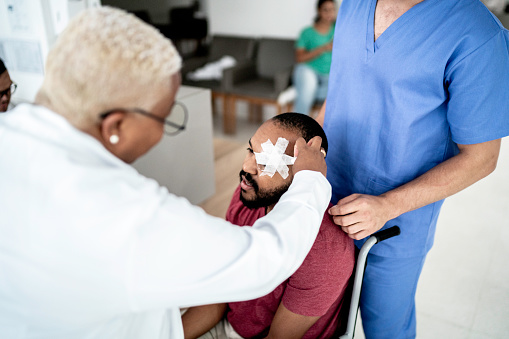Eye Safety Wellness & How To Prevent Work-Related Eye Injuries
Thousands of people every day sustain a work-related eye injury. In particular, an estimated 2,000 workers injure their eyes every day and need emergency medical care, according to Weekly Safety, a blog devoted to workplace safety-related issues.
Some work-related eye injuries happen in an instant. Other eye injuries might take months or years to develop. Either way, employers need to do everything they can to prevent work-related eye injuries, which are often covered by workers’ compensation benefits.
As a result, Prevent Blindness, a volunteer eye safety and health organization, has designed March as Workplace Eye Wellness Month for the second year in a row. The goal of the workplace safety initiative is to educate employers and workers about eye injuries and some of the best ways to prevent them.
What are common work-related eye injuries?
As noted above, an estimated 2,000 people sustain work-related eye injuries every day that require emergency medical treatment. This includes 15,000 welding-related eye injuries every year, according to Weekly Safety. Some of the most common work-related eye injuries include:
- Cut or scratch to the eye
- Corneal abrasion (a scratch to the cornea or white part of the eye)
- Punctured eyeball
- Acute hyphema (bleeding between the iris and the cornea of the eye)
- Eye strain, particularly digital eye strain
- Vision deterioration
- Partial or total blindness
Why do workplace eye injuries happen?
Workplace eye injuries often occur due to five common causes, according to the U.S. Centers for Disease Control and Prevention (CDC). These causes are:
- An object scraping the eye – Such objects can include dust, metal slivers, wood chips, or glass.
- Blunt trauma to the eye – An object striking the eye, often with strong force.
- An object penetrating the eye – Whether it’s a piece of metal, wood, or a nail, when such objects pierce the eyeball, partial or total blindness can occur.
- Chemical burns to the eye – Powerful cleaning products or chemicals can cause damage to someone’s eye (or both eyes) if they come into contact with the eye or surrounding tissue.
- Thermal burns to the eye – Excessively high heat or steam can cause work-related eye injuries. Welders in particular often sustain this type of eye injury.
In addition, eye strain caused by looking at computer screens or other electronic devices for too long can cause long-term eye damage and reduced macular health.
What can be done to prevent workplace eye injuries?
There are many steps employers can take to prevent eye injuries in the workplace. Such safety measures include:
- Provide employees with protective eyewear (goggles, face shields, etc.) if their job could potentially result in a work-related eye injury.
- Employers should conduct a safety assessment of the workplace to determine if there are any potential hazards that could result in an eye injury.
- Provider workers with safety training, including highlighting possible dangers.
- Place signs around the workplace reminding employees to wear eye protection in hazardous areas.
- Make sure computers used by employees are positioned correctly so workers do not experience digital eye strain.
Find out how an eye injury attorney can help you
Having an eye injury lawyer on your side can often make a dramatic difference in the outcome of your case. Even if you’re eligible for workers’ compensation or other benefits, your attorney can help you explore all your legal options. This is especially important if you become blind and permanently lose your ability to see due to your work-related eye injury.
At the Law Offices of Deborah G. Kohl, our attorneys can help guide you through the complex legal process and fight for your best interests. Contact our law firm and schedule a free case evaluation with a workers’ compensation attorney you can trust. We have three offices conveniently located in Rhode Island and Massachusetts and handle workers’ compensation claims in both states.


